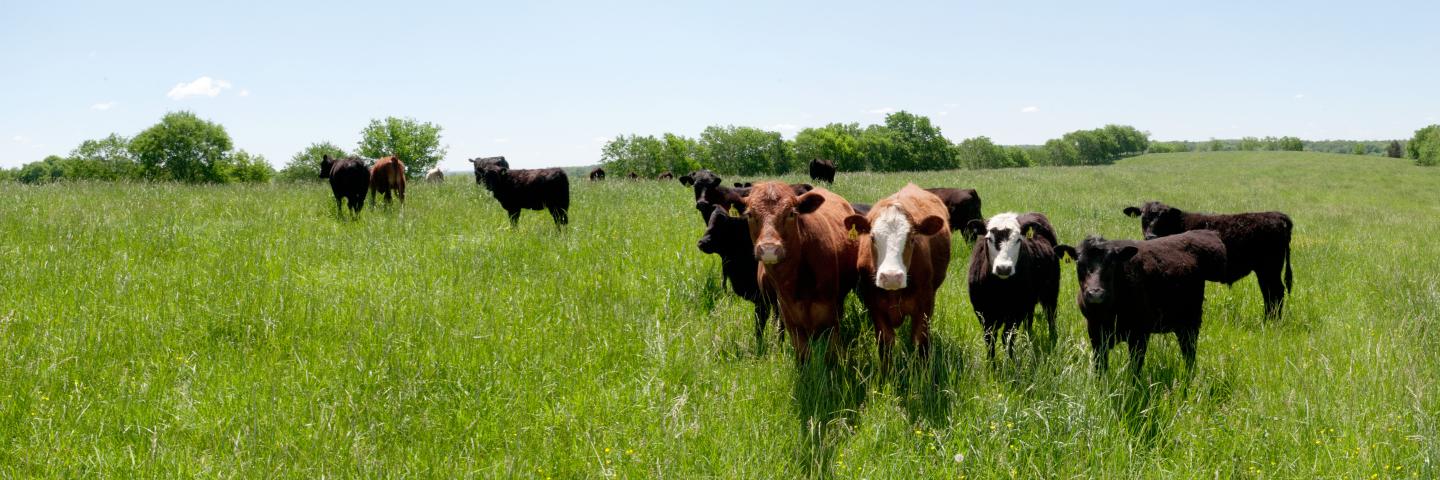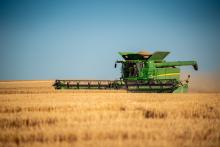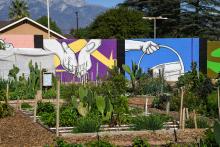
NRCS can help organic livestock producers with practices such as pasture and grazing management, diverse pasture plantings, fencing, and walkways, watering facilities, and shelters for animals.
Pastures, regardless of organic status, can become overgrazed, which can harm animal health and damage natural resources. USDA organic standards require producers to maintain pasture in a state of good health through management strategies that promote good forage quality and quantity, weed control, infiltration of precipitation, and erosion control.
Rotational Grazing
One key practice is rotational grazing. This approach separates open fields into a series of closed paddocks that regularly directs animals to fresh pasture. The size of these paddocks is determined by the number of animals, time of year, grazing duration, and quality of available forage. Proper fencing and adequate water supplies are features of these intensively managed grazing systems.

Rotational grazing is in essence mimicking what herbivores do in the wild. If you have a group of caribou, elk or bison in a natural setting, they graze a location then move on, so the forage can have a chance to regrow. That’s what we’re trying to do with our herd here, giving our paddocks an adequate rest period until we bring the cattle back again.
Fencing
Fences can control erosion or impede animal access to sensitive areas like ponds, streams, wellheads or protected habitat, while gated paddocks can be opened and closed to provide cattle access to fresh pasture. Diverse pasture plantings on provide livestock with well-balanced, nutritious forage that keeps them healthy. Using season-specific plantings is also good for the entire ecosystem.
Other Practices
NRCS can also help producers impellent livestock watering facilities and pipelines, windbreak planting, silvo-pasture, and livestock shelter structures, composting facilities, and waste management plants to meet USDA organic requirements and protect soil and water quality from animal waste.





